Susan Countryman
Posts by Susan Countryman:
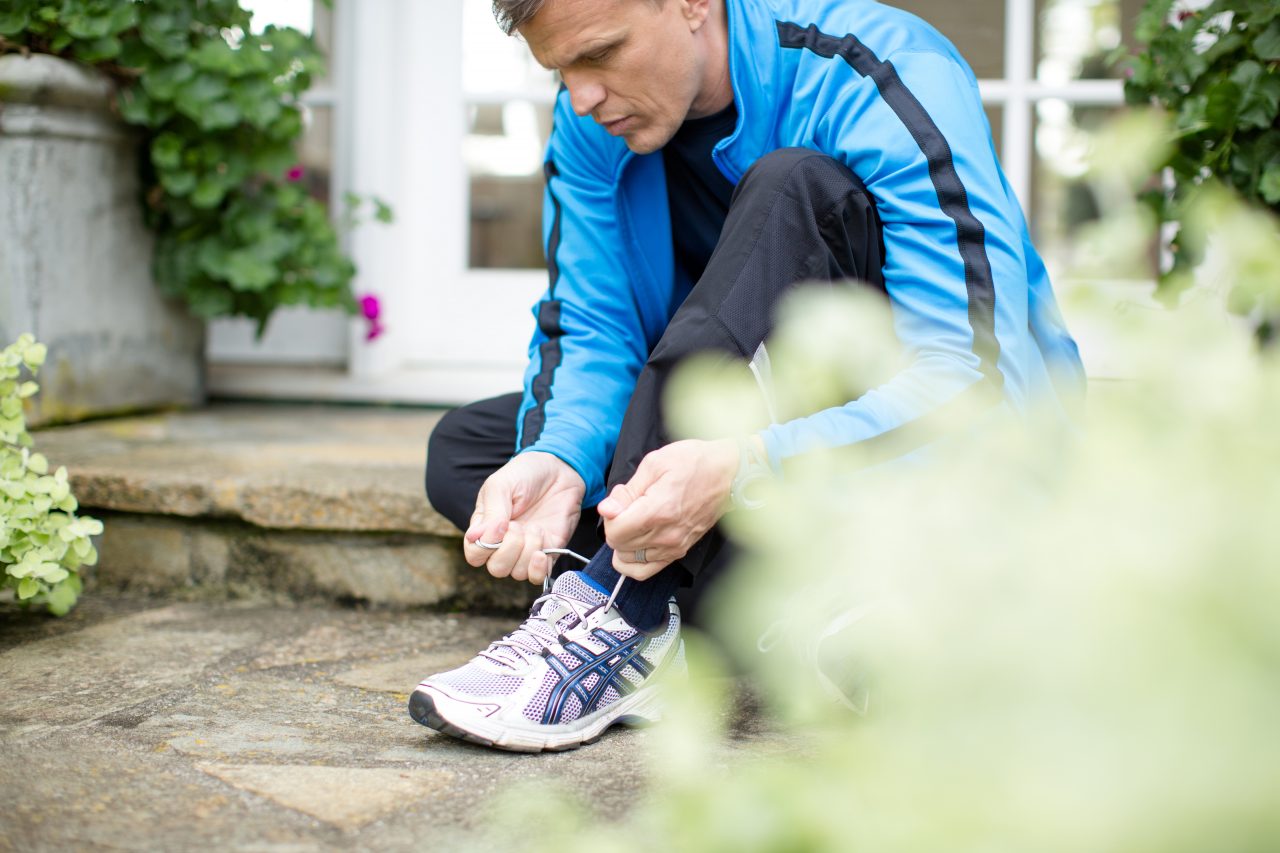
Self-Care For the Holidays

Self-Care For the Holidays:
One of the hardest things about the holidays is to find time to take care of yourself. We are so busy with shopping, planning events and cooking that we lose sight of self-care. It’s easy to put yourself in autopilot and forget that the driver also needs to stop and perform self-maintenance.
Even with a busy schedule we can still find some time to become more mindful and make decisions to improve your health for the holidays. Below are some tips you can adopt to thrive during the holiday season.
Plan Your Week
- Plan your week on Sunday. When we are busy and don’t have time, exercise goes on the back burner. When you view and look at your schedule before Monday, you can see where you can add in small chunks of fitness. Adding a 5-minute walk before work or stretching before a call can boost your resilience. Furthermore, you will feel less stressed, which will improve your mental outlook.

Eat at home
- Most of us will celebrate by dining with friends or eating take out. When you cook at home you are monitoring what you add into your meal. Many restaurants will add in extra oil, salt, fat, and other non-essential ingredients to your food. Your plate should be colorful and have a variety of food groups.

Water, Water, Water
- Think about what you are drinking. Eggnog, wine and other sugary drinks contain excess calories. Consume these items in moderation. As a reminder, water is the best hydration drink. Although there are specific guidelines for different populations, the rule of thumb is to consume 8 glasses of water per day.
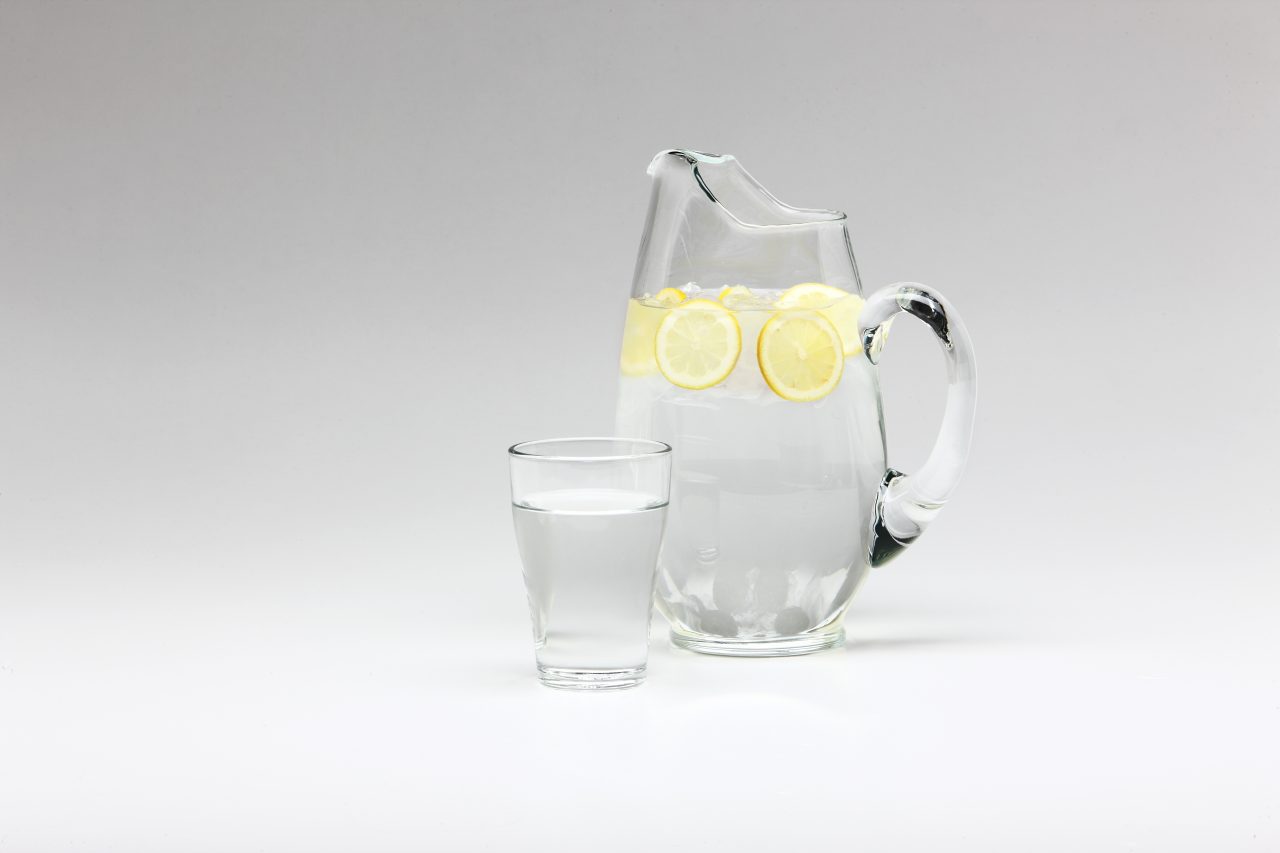
Burst of Exercise
- Something is better than nothing. Most of us have an all or nothing mentality in which we are obligated to obtain 30-minutes of exercise or else it doesn’t count. That is not necessarily true as research has shown that the body can demonstrate healthy responses to exercise in as little as 5-minutes. If you are short on time, try performing an interval of Tabata, squat in place or just go for a walk. Taking small steps will improve your fitness.
Wishing everyone a great holiday! Please stay safe and take care of yourself.
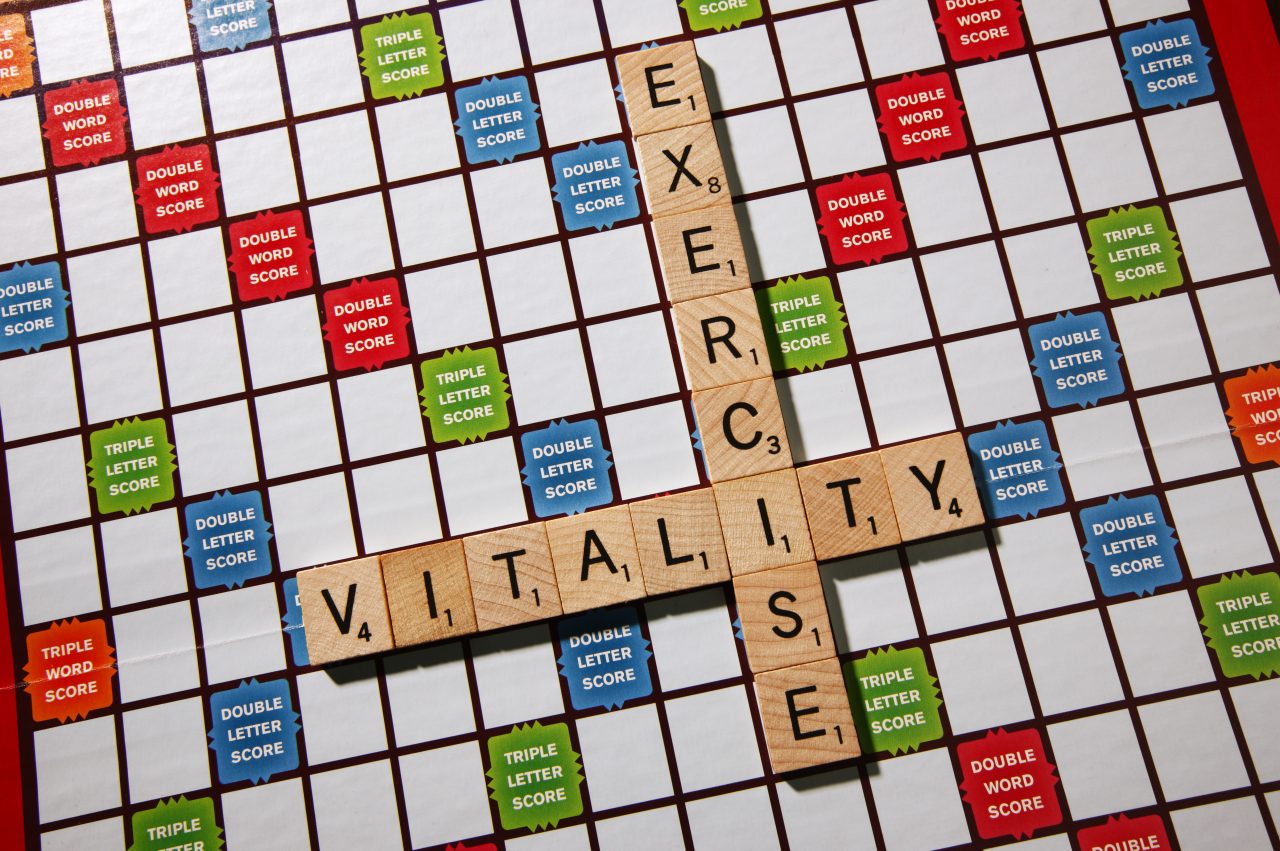

Being Present and Positive

Being Present and Positive:
As the weather cools off and we move into Fall and Winter, I can’t help but smile when I think about Thanksgiving. As a child I remember my parents cooking delicious food in the kitchen while a football game played on the TV. My siblings were chasing each other, and my mom and her friends were talking about where they wanted to go early morning shopping. There is a sense of warmth, comfort, and joy when I reminisce about these memories.
This year has been hard on many of us. We might have experienced a dramatic shift in our personal and professional life. I know I am still adjusting to teaching and training through ZOOM and seeing my coworkers through TEAMS. It’s especially difficult when I visit my parents and I have to wear a mask and make sure to wash my hands and keep my distance from my father who has COPD.
Even with the current health situation and social challenges we can still create great memories that will last a lifetime. We can still return to an experience of joy and amazement, similar to what we experienced as adolescents. Throughout my life experiences I’ve learned that happiness isn’t getting what you want but making the best with what you have. Below are some tips on how to practice being thankful this holiday season.
Perspective
- There is a saying by John Kabat-Zinn which resonates deeply with me. “Wherever you go, there you are” is a simple saying that reminds us to control where our thoughts go. If we start ruminating and dwelling on negative events, then our mindset will start to shift to a negative view of the world and our current circumstances. We can always change our perspective and adjust our lens to what we have. One tip is to find a positive in every difficult situation. I might not like the fact that I have to wear a mask with my parents, however I’m grateful that I get to see them and eat their delicious cooking!

Presence
- This holiday season try to be present with your family. As children we didn’t worry about working, having an income or taking care of others. As adults we have that responsibility, but we don’t need to dwell or worry. If we start to think about the future or all the responsibilities we have, we miss out on life and the present moment, which is always right in front of us. If you are watching a movie, watch and enjoy that movie. Don’t think about all the work you have to do when you go back into the office. Let current self be present, and future self, take care of future responsibilities.

Forgiveness
- Thanksgiving is all about connecting and being there with your family and friends. If you had some painful experiences with your family or friends that caused your relationships to drift apart, this year is a good year to reconnect with your loved ones. Everyone makes mistakes and no one is perfect. If you are still holding grudges or stuck in the past, see if you can find forgiveness and compassion for your loved ones and yourself. We can’t change the past, but we can always work together to build a better future.
I hope everyone has a wonderful and safe Thanksgiving. Don’t forget to do some squats every now and then as you’re watching the Macy’s Parade!

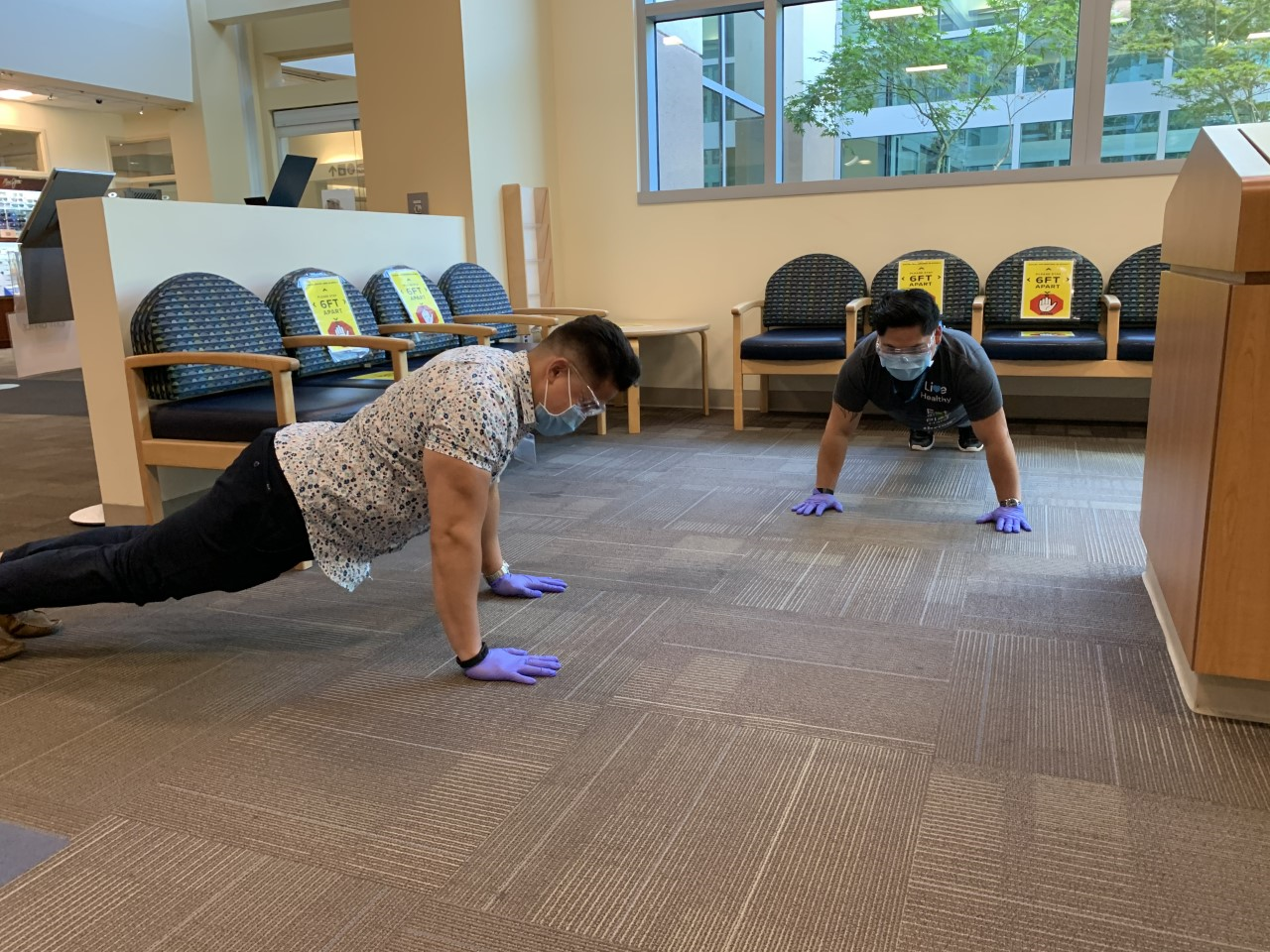
Optical Department Employees Rise and Thrive Together
The Optical Department at Point West rose to the challenge to take care of themselves and to stay motivated during COVID 19! Read their story below:
Who Are We and How It Started:
The Optical Department at Point West MOB is an amazing team; we are like a little family. We work together as an office to help patients with ordering new eyeglasses and contact lenses. We participate in daily group huddles and games during which we communicate our concerns and any suggestions we have to better serve our members. Since reopening after the COVID19 pandemic shutdown, we have transitioned from a walk-in based facility to services by appointment only. This was a big change not only for our staff but all our members as well. However, our team has made huge efforts to work together and keep good communication during that transition. Everyone has been very flexible and great team players.
What are we doing:
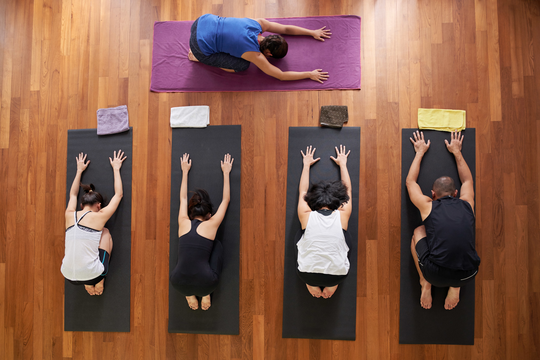
Yoga Stretches for Your Lower Back
One of the most common areas of pain and discomfort is the lower back. It is estimated that 31 million Americans experience low back pain at any given time. Worldwide, back pain is the leading cause of disability, preventing people from going to work and engaging in other physical activities.
Your back is comprised of bones, joints, ligaments, and muscles. These 4 components work together to allow movement, stability, and hold your back in proper alignment. Back injuries can occur when you have poor posture, perform repetitive tasks, or lift heavy objects. Chronic arthritis may also contribute to back pain.
Studies show that physical activity and exercise can reduce back pain. Let’s focus on 4 simple stretching exercises that may reduce back pain and strengthen the muscles in your back.
Cat/Cow
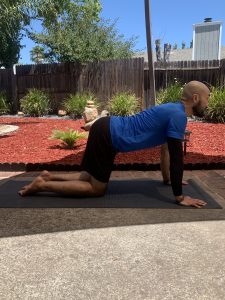 |
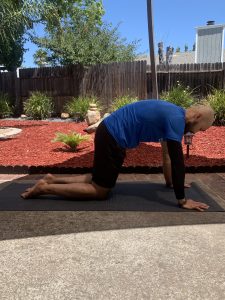 |
Using a yoga mat, begin on your hands and knees. Exhale as you round your spine, keeping your head down, into “Cat Posture”. Hold for a few seconds, then inhale as you arch your spine and lift your head up into “Cow Posture”. Perform both Cat and Cow for 8 repetitions.
Child’s Pose
Using a yoga mat, begin on your hands and knees. Exhale as you lower your hips down to your ankles while reaching your arms forward. You will feel a stretch in your lower back. Hold for 20 seconds and repeat for 2 sets.
Knees to Chest
Using a yoga mat, lay on your back and bring both your knees to your chest. Wrapping your arms around your knees, hold for 20 seconds and perform a total of 2 sets.
Eagle
Using a yoga mat, lay on your back and bend your right knee up toward your chest then over to your left elbow. Keep your left leg straight and keep your back and arms on the ground. Hold for 20 seconds and switch to the other side. Perform 2 sets on both sides.
Looking ahead, next month we will cover 4 strength exercises to strengthen the back and hips.
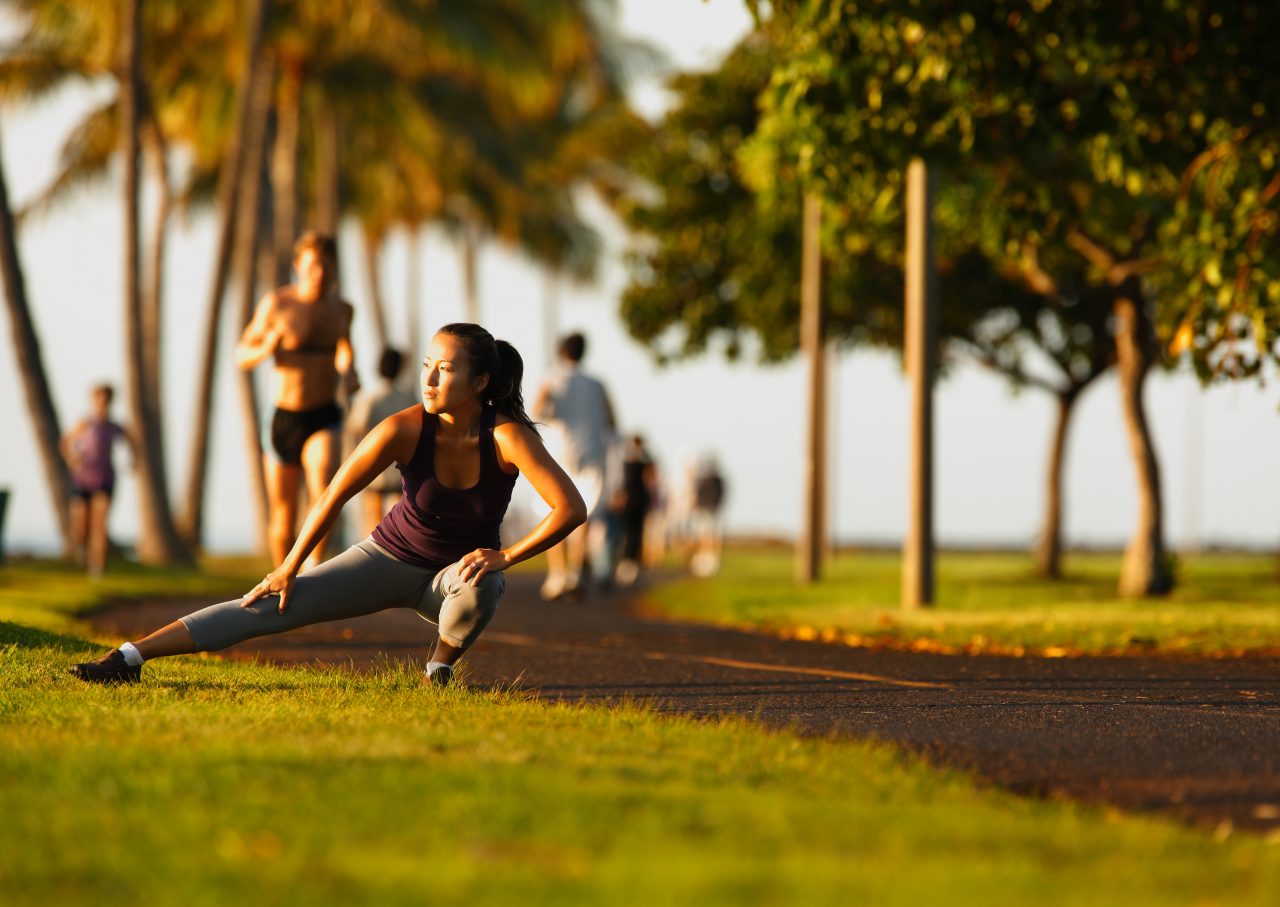
Tips For Exercising During Summer
Last summer I remember exercising during an intense Sacramento heat wave. During my session I noticed that I was sweating more than usual, my warm-up sets felt like my one rep max, and I started getting light headed. I sat down and tried to catch my breath but the room started spinning. My friend gave me water and I gradually felt better afterwards.
During exercise your blood flow increases and generates heat. As the outside temperature increases your body has to work harder to cool itself off while at the same time keep up with the demands of your exercise. In my case, since I could not handle both exercise and the heat, I experienced heat exhaustion.
The most common signs and symptoms of heat exhaustion include:
- Muscle cramps
- Profuse sweating
- Fatigue
- Nausea
- Headache
If you experience any of the symptoms above, it is essential that you lower your body temperature and hydrate immediately. I was lucky enough to have my friend around to help me re-hydrate and cool off. Other treatment tips are to remove yourself from heat and rest, take a cool shower or bath, or apply external cooling measures such as fans or ice towels. The neck, forehead, and under your arms are areas that can benefit greatly from cooling.
Heat exhaustion is preventable with adequate water intake and rest. However, if not treated, heat exhaustion can lead to heat stroke. This is when the body rises above 104 degrees Fahrenheit and you lose consciousness. There have been cases of severe injury to those who suffer heat stroke, which range from professional athletes to older adults.
Heat exhaustion and stroke can be prevented! Try these tips below:
- Exercise before or after peak sun hours. Any time before 10am and after 5pm are recommended. Reschedule a workout if the temperature is above 100 degrees Fahrenheit ; otherwise, your performance will be affected and you are at greater risk of injury or heat related illnesses.
- Slow down and pace yourself. You probably won’t break any personal records as heat can limit exercise intensity. Listen to your body and see what works best for you.
- If you have no other choice but to exercise during noon, please acclimate yourself. Your body can take 14 days to adjust to temperature changes. Try 10-15 minutes at a time and slowly build up your endurance.
- Wear lightweight protective clothing and hat. Apply plenty of sunscreen (UVA/UVB protection and minimum SPF 30 or more) and wear sunglasses. Lighter colors will help reflect sunlight while darker colors will absorb light, which will increase temperature.
- Drink extra fluids if you are planning on going out to exercise. The general recommendation is to drink 24 ounces of fluid before exercise and 8 ounces after. If you are thirsty then you are most likely already dehydrated.
Have a fun and safe summer!
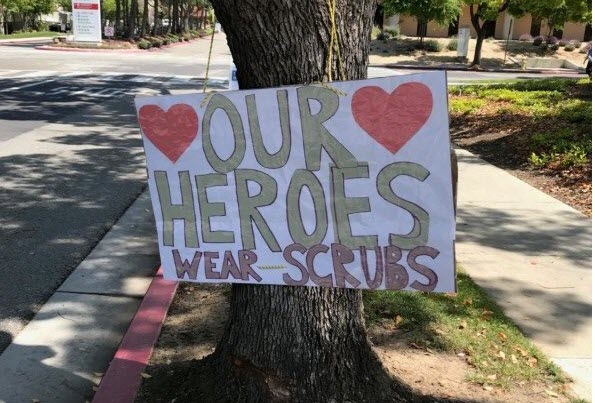
Students Thank Kaiser Permanente Health Care Professionals
Fourth-graders from one Northern California elementary school classroom shared their heartfelt thanks for Kaiser Permanente Northern California patient care during the COVID-19 pandemic.
Click on the picture below to see some of our region’s executives read the letters in this touching video.
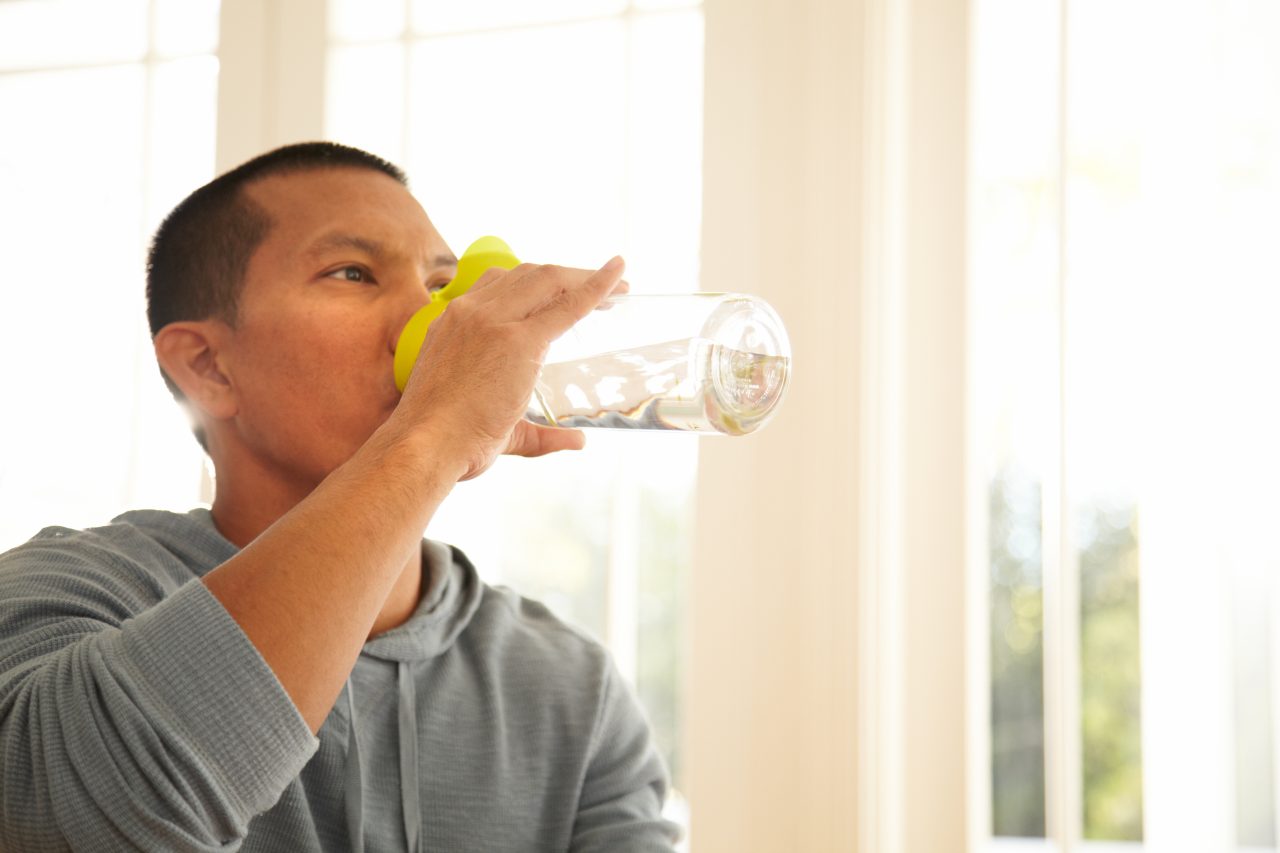
Summer Hydration
Summer Hydration
The beach is my favorite spot to visit in the summer. There’s something about the water, sun and warm sand between my toes. I feel like all my problems melt away and there’s a sense of peace and tranquility.
I usually pack my sunglasses, sunscreen, hat, and towel. But it seems like I’m missing something very important. Water!
Water is one of the most important things for our body yet at times can be forgotten in the summer fun. Water is essential because it regulates body temperature, lubricates joints, transports nutrients, and circulates blood. However, if we become dehydrated, our bodies ability to perform these essential functions become compromised. Therefore, it is essential we hydrate frequently, especially in the summer heat.
Below are three tips to help you stay hydrated this summer.
Hydrate with water
Soft drinks and soda contain water, but they also contain something called a diuretic, which causes your body to lose water. This in turn can lead to dehydration.
Hydrating with water is the better choice as it contains zero calories and is generally cheaper than sports drinks. People have various water needs based on weight and how much they sweat, but the general recommendation for daily water intake is 8 glasses of 8 ounces of water. Keep in mind this number changes during the summer.
Refuel with fruits and veggies
Fruits and veggies, which contain high water content, are great snacks to refuel your body. Oranges, grapes, carrots, lettuce, and berries are all high in water content.
If you don’t have fresh fruit, frozen fruit is a great substitute. Keep frozen fruit in your freezer and add some to a healthy and delicious smoothie.
Check in with yourself
Monitor your body, especially when you exercise, to determine if you are developing symptoms of dehydration. If you feel dizzy, nauseous, or overly exhausted during exercise, take a break and hydrate yourself. Your body fatigues faster during the summer so it is a good idea to take it easy. Lower your expectations on your next run or exercise session.
Summer is meant to be enjoyed but remember to bring your water with you. Stay safe and healthy!
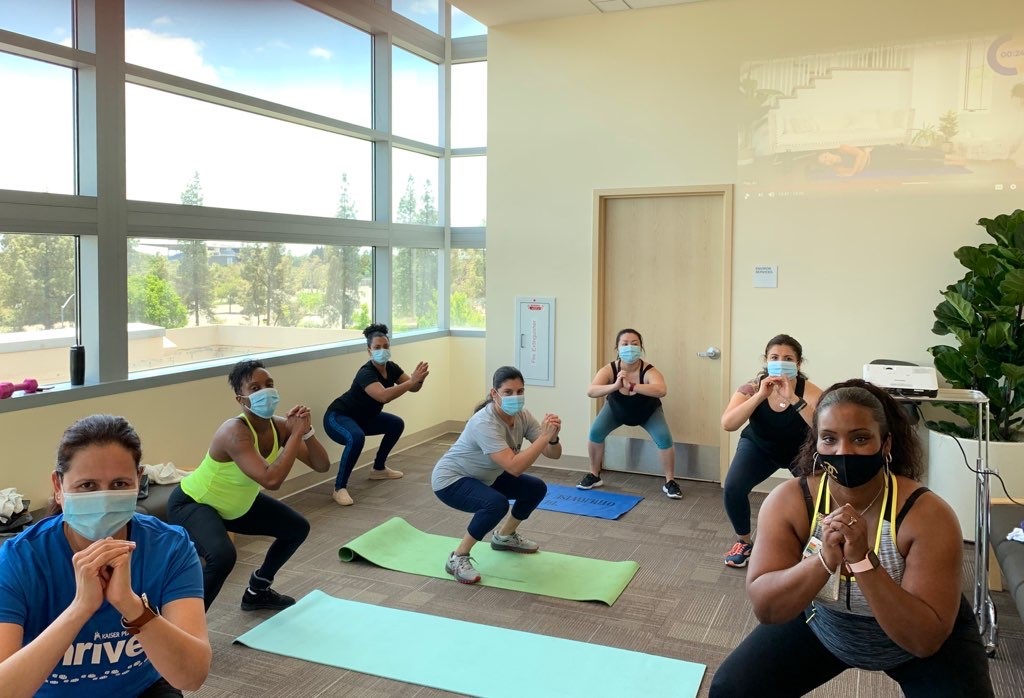
Point West Employees Rising and Thriving
The dedicated employees at Point West Medical Center have risen to the challenge of taking care of themselves and motivating each other! Read their story below.
“I like the energy and motivation from the group. We encourage one another to keep going and always finish strong.” Kia Yang

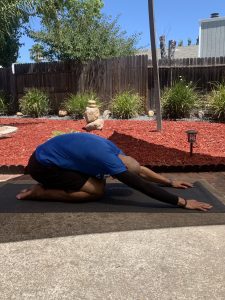
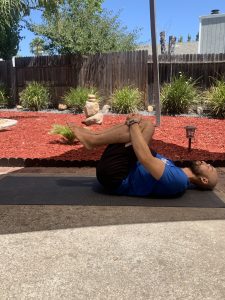
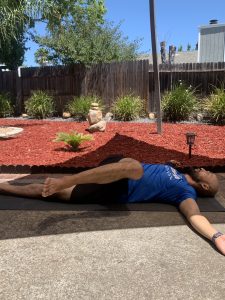
 This website uses several features that are not available to the browser you are using.
This website uses several features that are not available to the browser you are using.